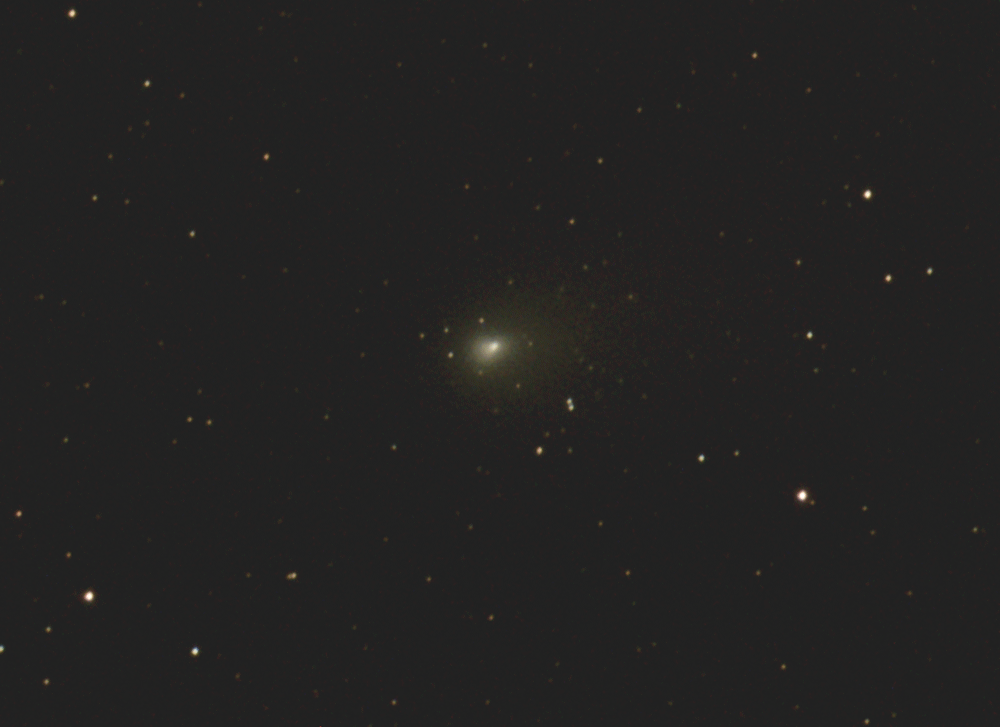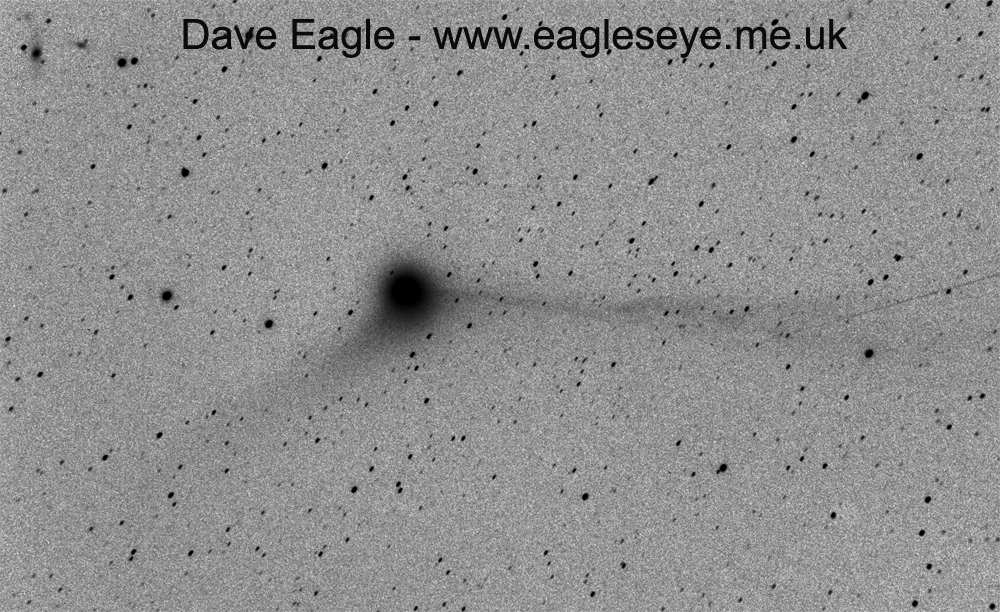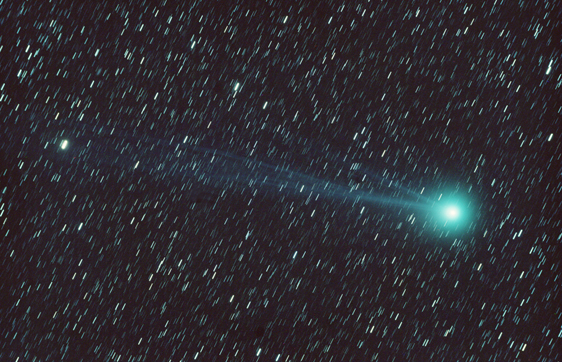Imaging comets offers many challenges over deep sky objects.
Deep sky objects stay still relative to the stars, so as long as you are tracking the sky OK, they will show lots of details on long exposures. Comets are notoriously difficult, especially when they are approaching perihelion (the closest point to the Sun), when they are moving at their quickest in their orbit, or relatively close to Earth, when their perceived motion is at its greatest.
When these two circumstances coincide, the comet appears to be really shifting against the background stars from Earth. So unless the imagers telescope can be tracked on the comets motion, details in the comets tails or coma will quickly blur as the motion of the comet smears it across the image.
The animation below shows the motion of Comet 21P / Giacobini-Zinner on the 16th of August. Click here for my guide to viewing Comet 21P.
This was produced using 40 second subs, taken immediately after one another. You can quite clearly see how quickly this comet is shifting between each exposure.

There are ways and means around this to make sure that the image shows maximum detail. The computer can be set to follow a set track in the sky, or, if the comets pseudo-nucleus is bright enough, auto-guide on the comet itself.
When these techniques are used, images of the comet are superb.
Below are two images of Comet C/2013 US10 / Catalina I took on the morning of the 21st of December 2015. This was a very fast moving comet.

But not all imagers are as well advanced as this, or the comet isn’t bright enough to guide on. So how can they cope with this movement?
The answer lies in reducing the exposure of individual subs taken of the comet.
In really fast moving comets, like Comet Catalina above, despite the pseudo-nucleus in this case being bright enough to auto-guide on, the comets movement was so quick, that I had to keep each exposures below 15 seconds each, to prevent the comet blurring. Each sub-image was taken one after the other. I kept imaging the the comet for over two hours before the sky started to brighten as dawn approached.
You would have thought that catching over two hours of data would have given me a superb image when all these subs were stacked together. Not So!
Have a look at the two Catalina Images shown above again. These are stacks of images taken about an hour apart. Look at the detail in the straight ion tail, pointing towards the right hand side of the image. There is a disconnection event visible in the first image, and this “ripple” was seen to move down the ion tail over the two hours as shown in my animation below.

Had I stacked all the images over the two hours, any detail in the ion tail would have smudged itself out of existence and been completely lost, due to its movement. So to produce the individual images in this animation, I had to effectively stack a small selection of subs from different time frames throughout the imaging period to produce my final series of images.
So, the two key points to take away from this is:
If the comet is moving fast, and the comet is too faint to guide on, use short exposures to reduce the movement of the comet during each exposure.
If imaging the comet for an extended period, do not be tempted to stack all the images over that time as any detail will blur itself out.
You should then end up with something that starts looking something like this.
Comet C2014 Q2 / Lovejoy – 6th February 2015.

